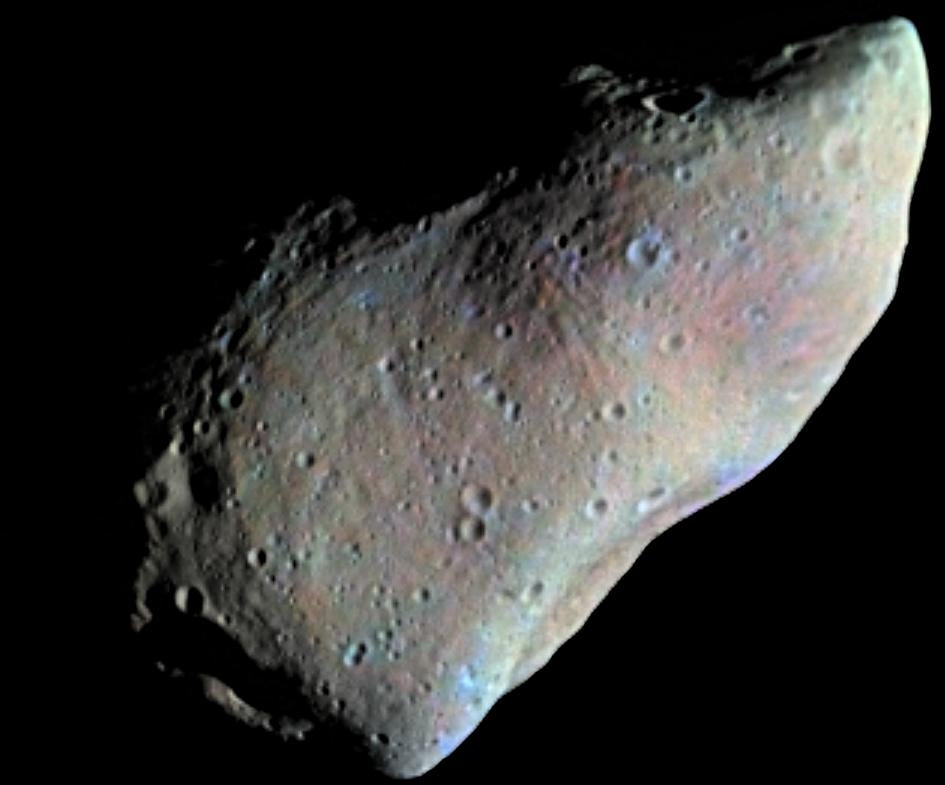Welcome to our new blog series. Over the next 12 months or so we will look at the Asteroids within our solar system. The series is based upon our entry level book: The Asteroids of the Solar System which takes the reader from an introductory level to around 1st year undergraduate level. We will begin our blog series here by defining what an asteroid is!
Asteroids are perhaps one of the most diverse ranges of objects within the solar system and without doubt the most numerous objects. They are classified according to their size, orbit and position within the solar system and for many years their nature was unknown. They are all (astronomically speaking) small. One of the largest, and the first to be discovered, Ceres, has a diameter of just 952 kilometres. Ceres, however, is now defined as a dwarf planet. Observed from Earth using anything but the largest of telescopes, they cannot be resolved into anything more than a star-like image. The term ‘asteroid’ was first proposed by William Herschel (b.1738 d.1822) in 1802, after a suggestion to him from the Greek expert Charles Burney (junior), and is derived from the Greek asteroeides; ‘star-like’.
Ils sont assez petits (sur le plan astronomique). Ceres est l’un des plus grands et le premier à avoir été decouvert, avec un diamètre de 952 kilomètres. Toutefois Ceres est aussi une planète naine. Observée de la Terre sans un très grande télescope les astéroïdes ressemblent à des étoiles. C’est William Herschel (1738-1822) qui a proposé le mot ‘àstéroïde’ sur les conseils d’ un expert grec, Charles Burnior (fils), et le mot astéroïdeses, ‘comme une etoile.’
taken by the Galileo orbiter, 29th Oct 1991
Courtesy of NASA
Our blog takes an asteroid specific view. But before we look at this class of object, we need to make some basic definitions of object distinguishing terms. Here we will use the terms:
Comet – to mean an object on a high eccentric (e generally > 0.75) heliocentric orbit. These are predominately icy in nature with cometary ‘tails’ visible at and near perihelion (which is the position in an orbit when the object is closest to the Sun).
Dwarf planet – to mean a largely spherical body (in hydrostatic equilibrium) within a heliocentric orbit, but which has a small gravitational ‘sphere of influence’ and thus has not cleared its near orbital region of all other material. We also use here ‘minor planet’ as synonymous with dwarf planet.
Meteoroid – to mean a small rocky object of size less than 10 metres in dimensions, in heliocentric orbit but approaching close to Earth at some stage in its orbit and lifetime. A ‘meteor’ is when a meteoroid enters the Earth’s atmosphere; and a ‘meteorite’ is any part of the meteor which survives its passage through the atmosphere and leads to a meteoroid fragment reaching the surface of the Earth.
Asteroid – to mean one of the set of objects smaller than a dwarf planet but larger than a meteoroid, and orbiting the Sun within the orbital distance of Neptune. We will define other objects and specific types of asteroid as we go on.
Observationally, asteroids (of whatever size) are quite distinct from comets. Asteroids do not form dust or gas trails, although as we will discuss later there are always exceptions! They do not form a fuzzy ‘coma’ as most comets do when they come closer in their orbits to the Sun. However, neither asteroids nor comets, because of their size and nature, have distinguishing or distinctive surface markings which can serve to identify them uniquely. Identification and recovery of previously observed objects could then be a significant issue.
Fortunately for us, this problem was solved in the late 1890s by the great French astronomer François Felix Tisserand (b.1845 d.1896) who showed that a number derived from an object’s orbital parameters can be used as a unique identifier; the Tisserand criterion. This criterion (often referred to as the Tisserand invariant) is a unique number assigned to each comet and asteroid, and is always one of the first analyses undertaken when an unknown or suspected new asteroid is observed. The life and works of Tisserand are comprehensively appraised within our acclaimed book: François Felix Tisserand – Forgotten Genius of Celestial mechanics.


